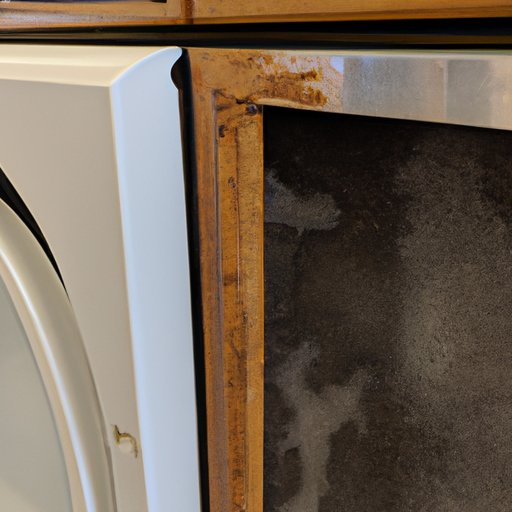Introduction
Steam damage to kitchen cabinets can cause significant damage and reduce their lifespan. Steam damage is caused when moisture from steam accumulates inside the cabinet, causing wood to swell and eventually warp or rot. Unfortunately, once steam damage has occurred, it can be difficult to reverse. Fortunately, there are some steps that can be taken to help minimize the damage and extend the life of your kitchen cabinets.
Replace Damaged Cabinet Components
The first step in fixing steam damage to kitchen cabinets is to identify any damaged components and replace them. This includes hinges, handles, and other hardware that may have been weakened by moisture. If any of these components are visibly warped or cracked, they should be replaced with new parts.
Clean and Restore Cabinet Exteriors
Once the damaged components have been replaced, it’s important to clean and restore the exterior of the cabinets. This will help to remove any dirt, grime, and mildew that may have built up over time. It’s important to use an appropriate cleaning product for the material of the cabinet. For wood cabinets, a mild soap and water solution should be used. For metal or plastic cabinets, a commercial cleaning product should be used.

Repair or Refinish Cabinet Interiors
The next step is to assess the interior of the cabinets for any signs of damage. If the interior is discolored or stained, it may need to be repaired or refinished. Depending on the extent of the damage, this may involve sanding, staining, and sealing the surface. If the damage is extensive, it may be necessary to hire a professional to complete the job.
Use a Dehumidifier to Reduce Humidity
To prevent further steam damage to your kitchen cabinets, it’s important to reduce the amount of moisture in the air. The best way to do this is to invest in a quality dehumidifier. Dehumidifiers work by pulling moisture out of the air, which helps to keep the air dry and reduce the risk of steam damage. It’s important to follow the manufacturer’s instructions for proper operation and maintenance of the unit.

Install Vents to Improve Air Circulation
Installing vents in the kitchen can also help to improve air circulation and reduce the risk of steam damage. Vents allow hot air to escape, which helps to keep the area cool and dry. When selecting vents, it’s important to choose ones that are properly sized for the space and made from a durable material that can withstand moisture.
Seal Gaps Around the Cabinets
Finally, it’s important to seal any gaps around the cabinets. Gaps can allow moisture to get into the cabinet, which can lead to steam damage. To seal the gaps, use caulk or weatherstripping. Make sure to apply the sealant evenly and press firmly so that the seal is tight.

Invest in a Quality Steam Cleaner
Having a quality steam cleaner can also help to reduce the risk of steam damage. Steam cleaners are designed to quickly and effectively remove dirt and grime from surfaces. When choosing a steam cleaner, make sure to select one that is designed for the type of surface you’re cleaning. Additionally, make sure to read the instructions and follow all safety precautions.
Conclusion
Steam damage to kitchen cabinets can be difficult to reverse, but there are some steps that can be taken to help minimize the damage and extend the life of your kitchen cabinets. These include replacing damaged components, cleaning and restoring exteriors, repairing or refinishing interiors, using a dehumidifier to reduce humidity, installing vents to improve air circulation, sealing gaps around the cabinets, and investing in a quality steam cleaner. By taking these steps, you can help protect your kitchen cabinets from steam damage.


